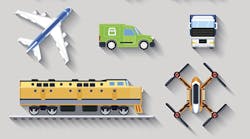While many of us have heard about (and maybe even seen) air drones in use for recreational, military and now potentially product delivery by Amazon, the latest drones are actually land-based.
For example, there’s one from a startup called Starship (“Forget delivery drones, meet your new delivery robot”) which has already been tested in the UK and is soon to be tested in the U.S. Another from a startup called Marathon has been tested by Domino’s in Australia for pizza delivery (“Domino's pizza delivery drone hits the road”).
Furthermore, whether the delivery comes via traditional means or via drone, companies such as Amazon are also allowing customers to trigger orders for local delivery using apps and, in Amazon’s case, a voice-activated bar code scanner called Dash.
While these technologies might seem far-fetched or at least far out, there is no doubt that the “last mile” of retail will be radically transformed in the not-too-distant future.
This change will also have a huge impact on the “lean-ness” of one’s supply chain. It’s been said that the land drone is one-tenth the cost of traditional (local) delivery methods. On top of that, we all know the impact point-of-sale (POS) data in combination with collaborative programs have had on improving efficiencies in the supply chain in many industries. Can you imagine the added benefit of manufacturers and distributors not only knowing inventory levels in their customers’ warehouses through current collaborative programs but potentially in their homes as well? They will also have the added ability to capture actual demand at its source for further improvements in forecasting.
It’s certainly an exciting time to be in the supply chain and logistics management field as things are really looking up (400 feet) and down (at your feet in the case of the land drone).




